In Windows 10 Creators Update, there are many svchost.exe processes running all the time. If you open the Details tab of the Task Manager in Windows 10 Creators Update, you will be surprised to see a huge number of instances of the svchost.exe process.
Advertisеment
Windows is known for having a lot of svchost.exe processes but in Windows 10, they increased even more. Even previous versions of the operating system like Windows 7 and Windows 8.1 had a large number of them. This is because the Svchost.exe (Service host) executable file is used to run various system services. Each instance combines a group of services. According to Microsoft, this model of service management allows reducing the memory consumption and reduces attack surface.
Starting with Windows 10 Creators Update, services are no longer grouped if your PC has sufficient amount of memory. Now, for every service, there is a dedicated svchost.exe process.
This increases the number of Svchost.exe processes dramatically. We explained this change in detail in the article
Why Many Svchost.exe are Running in Windows 10 Creators Update
Today, we'll see how to configure how Windows 10 Creators Update splits up svchost processes. This can be done with a Registry tweak.
To set Split Threshold for Svhost in Windows 10, do the following.
- Open Registry Editor.
- Go to the following Registry key:
HKEY_LOCAL_MACHINE\SYSTEM\CurrentControlSet\Control
Tip: See how to open the desired Registry key directly with one click.
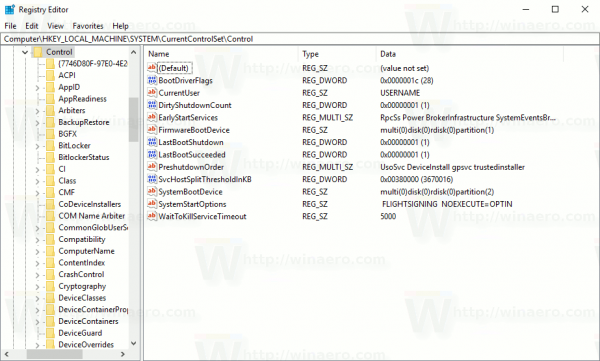
- Here, create or modify a new 32-bit DWORD value named SvcHostSplitThresholdInKB and change its value data from 380000 to an amount just above the total RAM you have in kilobytes (KB).
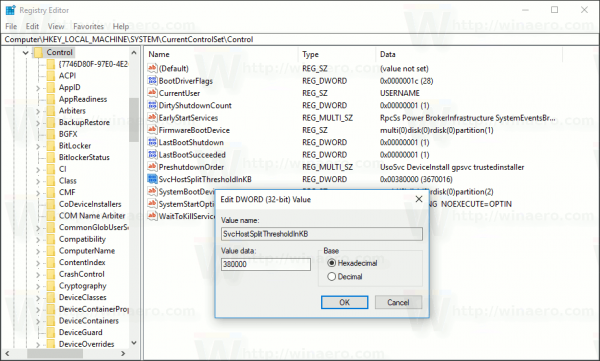
Enter the new value in decimals. For example, if you have 8 GB of RAM, you should enter the value in decimals as 8388608 (8 GB=8192 MB or 83,88,608 kilobytes). Use Winaero Tweaker to quickly find the amount just above the total RAM you have in kilobytes (KB).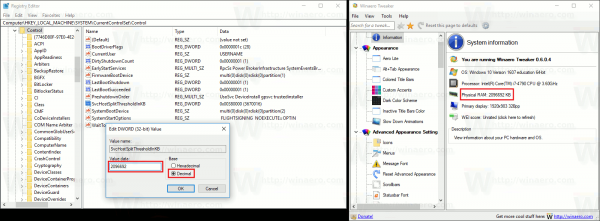
Note: Even if you are running the 64-bit Windows 10 version, you need to use 32-bit DWORD as the value type. - Restart Windows 10.
Reboot, and there will be no more 70+ processes showing. The behavior of previous versions of Windows will be restored.
You can save your time and use Winaero Tweaker. The appropriate option can be found under "Behavior".
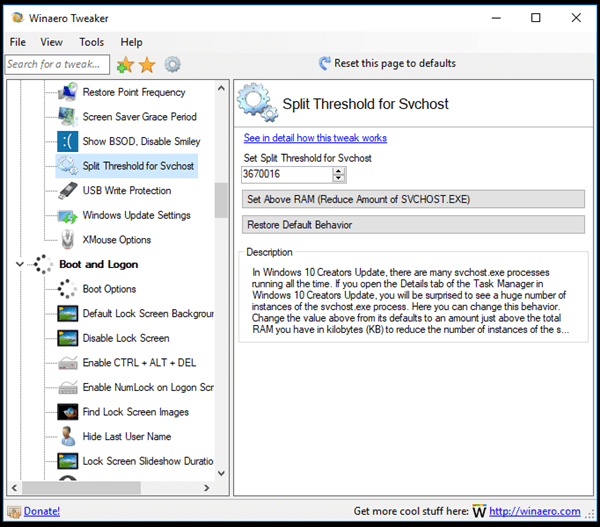
You can get the app here: Download Winaero Tweaker.
Many thanks to our reader Glenn S. for sharing this tweak.
Support us
Winaero greatly relies on your support. You can help the site keep bringing you interesting and useful content and software by using these options:

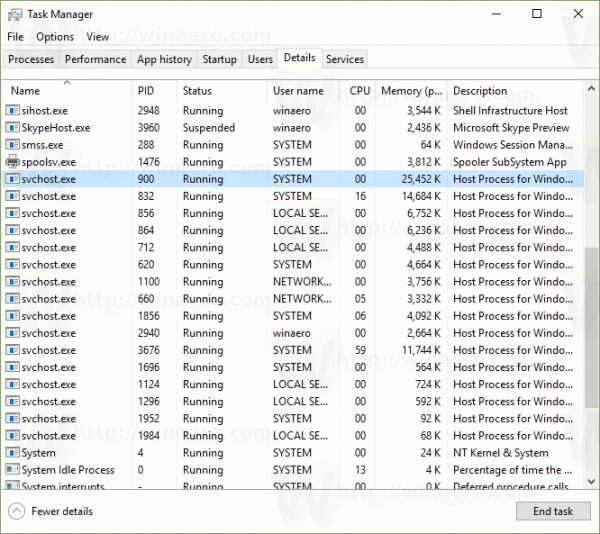

Great tip here. But I think it’s great having a single SVCHOST.exe process for each individual service or similar groups of services for troubleshooting reasons. That way if a service is hanging and wont stop or start, the only way is to kill the svchost process, but the process is hosting multiple services and you kill it the system can become unstable.
But handy none the less,
This tweak does not seem to work on build 15063.0 I have it in place and show 120 processes running.
Please Sergey introduce this tip in your Tweaker!
Thank you!
Hi
I will do.
Thank you for everything you’ve done so far!
I just have a slight issue: ‘Split Threshold for Svchost’ doesn’t show up under Behavior, or in my tweaker at all. I’ll use the manual method, but I’m trying to figure out why the tweak wouldn’t be present for me specifically. I’m on Win10 Home x64, Build 14393, if that matters. Tried redownloading winaero tweaker,, tried both portable and install–still nothing.
Just hoping there’s something I’ve overlooked that’ll explain the missing option :x
Hi
This is a new feature of Windows 10 version 1709
You are running 1607.
Ah, figured I was overlooking something. My bad.
Thanks!
Works perfect at w10 1703.
Hello
Since the last update, the svchost processes in the task manager are no longer grouped with this “tip” (surely the same with Windows 11)
Anyone know if it’s possible otherwise ?
Thanks
Updates often reset this registry entry, you’ll need to reapply it.
Simply set it to 0 (zero) also works. There is no need to calculate your memory size into KB.